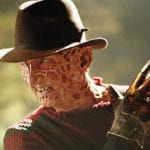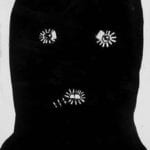 Weird Stuff
Weird Stuff  Weird Stuff
Weird Stuff  Animals
Animals 10 Inspiring Tales of Horses Being Human
 Mysteries
Mysteries Top 10 Haunting Facts About the Ghost Ship MV Alta
 History
History 10 Surprising Stories About the Texas Rangers
 Humans
Humans 10 Philosophers Who Were Driven Mad by Their Own Theories
 Miscellaneous
Miscellaneous 10 Video-Game-Worthy Weapons and Armors from History
 Weird Stuff
Weird Stuff 10 Psychics Who Accurately Predicted Wartime Events
 The Arts
The Arts 10 Pieces of Art Inspired by a Broken Heart
 Health
Health 10 Science Fiction-Sounding New Medical Treatments
 History
History 10 Surprising Facts About the Father of Submarine Warfare
 Weird Stuff
Weird Stuff 10 Times Real Laws Were Based on Bizarre Hypotheticals
 Animals
Animals 10 Inspiring Tales of Horses Being Human
 Mysteries
Mysteries Top 10 Haunting Facts About the Ghost Ship MV Alta
Who's Behind Listverse?

Jamie Frater
Head Editor
Jamie founded Listverse due to an insatiable desire to share fascinating, obscure, and bizarre facts. He has been a guest speaker on numerous national radio and television stations and is a five time published author.
More About Us History
History 10 Surprising Stories About the Texas Rangers
 Humans
Humans 10 Philosophers Who Were Driven Mad by Their Own Theories
 Miscellaneous
Miscellaneous 10 Video-Game-Worthy Weapons and Armors from History
 Weird Stuff
Weird Stuff 10 Psychics Who Accurately Predicted Wartime Events
 The Arts
The Arts 10 Pieces of Art Inspired by a Broken Heart
 Health
Health 10 Science Fiction-Sounding New Medical Treatments
 History
History 10 Surprising Facts About the Father of Submarine Warfare
13 Chilling Hammer Horror Films
Hammer. A name synonymous with lush, Gothic horror with a very British tint. The Halloween season is ideal for bringing us back to those years from about 1958 until the early 70s, when Hammer—previously a somewhat down-on-its-luck film studio, hit upon the winning formula of revived horror classics with a fresh, Technicolor hue, liberally doused in blood and gore. Hammer produced dozens of films and a few TV series in its lifetime (it had a dry run in the 30s, before war-time exigencies slowed production and brought the studio to near-failure) –comedies, war movies, straight dramas, science fiction—but it became know for those fifteen or so years of full-color period piece horrors—often derivative and cheap and sometimes exploitative—but always flashy and classy and fun. Of course, to our tastes today these films are tame, the blood and gore silly and fake… but their wonderful period-creak has the cinematographic patina of a lost time—not only in the Victorian/Edwardian mise-en-scene of each film, but in the double dip of a bygone fifties and sixties, when times were simpler and even cheapish horror was slick and theatrical.
The following are thirteen of the best Hammers, partly my opinion and partly the consensus of Gothic horror fans. Kids today may be jaded, but open your minds to suspended disbelief, and you may find yourself enjoying the look, colors, tonal moods and dark atmospheres of these small gems… not to mention the splendid acting talents of Peter Cushing, Christopher Lee, Andrew Keir, Barbara Shelley, Michael Ripper, Andre Morrell and many others—the regular players who made Hammer their home.
These films are offered in no particular order.
Bernard Quatermass was a character created by Nigel Kneale for the BBC in the 1950s, who was featured not only on television, but in a series of films produced by Hammer, beginning in 1955 with “The Quatermass Xperiment.” This begat a follow up a couple years later. Both films starred a poorly-cast American, Brian Donlevy, (a somewhat mundane actor with a well-fed face, who looked more businessman than scientist) as Quatermass. After these two black and white efforts failed to take off, Hammer delayed producing another Quatermass film until 1967, when it could apply both Technicolor and a better actor more suited to the role: bearded and tweeded Andrew Keir, who lent a professorial grumpiness to the part.
But not only that—Quatermass and the Pit (titled “Five Million Years to Earth” for American distribution) was given a Hammer supernatural horror treatment as well. The story of a mysterious and apparently dangerous “haunted” projectile discovered during construction of the London Underground (it’s at first assumed to be an unexploded German bomb leftover from WWII) which turns out to be a spacecraft from Mars (replete with mummified Martian corpses and fossils of the ape-men the grasshopper-like Martians were experimenting on) is more pure ghost and horror story than science fiction, with the ancient Martian plot to transfer the survival of their civilization to genetically engineered apes (later to evolve into Humanity) mixed in with horrific legends of demons, devils, ghosts and goblins. Indeed, the horned visage of the Martians is discovered to be the root at our race memory of a classic devil, and the whole thing ends in a terrific bang of electricity and telekinetic energy. A favorite of many a Saturday Afternoon TV monster movie matinee for us kids of the 70s, this film still packs a delicious jolt.
Not a horror tale you say? Oh, think again. When Hammer got a hold of it, the most famous Sherlock Holmes story became very much a horror yarn, and one of the best. In fact, this ranks, in my opinion, as purely THE best version of “The Hound” ever made, and one of the best Holmes movies ever. Peter Cushing turns an elegant twist as the great detective, with Andre Morrell a superbly dead-on Watson. Christopher Lee is along for even more delight as the haunted and hunted Sir Henry Baskerville, heir to the titles and lands of the cursed Baskerville family. It’s always a thrill to watch the Lee and Cushing team-ups, and this one doesn’t disappoint. If you’re a Holmes fan, you’ll almost certainly love Cushing’s take on your hero, and if you’re a horror fan, you’ll find this one rare and tasty meat that’s well above the common dog food.
I’ve held forth on this one before (see my “Ten Suspense Movies You Must See’) but it never hurts to invite new audiences to look over an old friend.
For a time in the early-to-mid 60s, Hammer produced a series of psychological thrillers in the “mini-Hitchcock” vein, and to my mind this is the best. This twisting, turning, nothing-is-what-it-seems shocker affected me so much when I was a kid that I never forgot the scene of an old man’s corpse, glimpsed floating at the bottom of a weed-choked pool. I only saw the film once, on TV in the early 70s, but that scene stuck with me for so long that I finally tracked down the film years later, (I had remembered only bits and pieces of it) and of course added a copy of it to my library.
Pretty Susan Strasberg stars as the wheelchair-bound heiress who comes home to her family’s Cote d’Azur villa to suspicions that her stepmother and the village doctor may have murdered her father, and are plotting to drive her insane. From there it’s a minor roller-coaster ride of turning shocks with a surprise ending that delivers and delivers well. Creepy, moody, and sprinkled with scares, everyone I’ve introduced this film to has found it a fun delight. Let me know what you think.
Okay, first classic “monster” horror on the list, and also the first pairing of Peter Cushing as Dr. Van Helsing and Christopher Lee as Dracula. This stylish thrill-ride boasts the signature Hammer cinematography, dramatic score, expertly paced editing, and excellent direction of Terence Fisher. It made Hammer’s name on both sides of the Atlantic, and begat a series of Dracula sequels… not to mention launching the careers of the aforementioned Cushing and Lee as horror stars.
But it’s not only historic importance that places “Horror of Dracula” on this list (called of course simply “Dracula” in the UK, the “Horror of…” had to be added for US distribution as Universal still held rights to the solitary “Dracula” for use as a film title) it’s also because this is simply a ripping good movie. Speedily but effortlessly paced, it plays as much, or more, with the original Bram Stoker story as the Universal Lugosi version did, but where the Universal classic was spooky and creaky, and Lugosi’s vampire a merely menacing Transylvanian undead, the Hammer film is a bloody, frightening, tense thumper, and Lee’s Dracula a deadly, horrifying, evil killer. With his bloodshot eyes, blood-stained lips and demonic stare, this more violent Dracula makes us forget that prior to the Hammer/Lee interpretation, Hollywood vampires had been only elegant men in elegant evening clothes, like lothario magicians. Lee’s Dracula brings the dripping blood and brutal menace to the figure, and makes him more demon than charming trickster… the true Prince of Darkness.
I’ve never been as big a fan of the Hammer Frankensteins as I’ve been the Hammer Draculas. The reason isn’t merely reflective of a preference for murderous vampires over lumbering creatures, but it really hearkens to a difference in the way the two series were played. There’s something new and keenly exciting about Christopher Lee’s Dracula and something creepily terrifying about most of the films in which he played the character. But there’s something missing, I think, in the Hammer Frankensteins. There’s something of the unoriginal about them, the derivative, of the Universal originals… while at the same time the Hammer Franks pale, for all their Technicolor garishness, when placed up against the Universal high-marks. I simply can never view a Hammer Frankenstein film without remembering the James Whale original, or The Bride of Frankenstein or Son of Frankenstein. Perhaps its Karloff, whom for once Lee could not measure up to, no matter his physical height. And perhaps, too, it’s the way the Hammer Frankensteins never seemed to grasp the pathos or the tragedy of the monster—let alone his creator. And here too the Hammers falter—because, as Denis Gifford pointed out in his unparalleled study of the Horror film (A Pictorial Guide to Horror Movies) Hammer made the mistake of making Doctor Frankenstein the continuing element in the films, and not the monster. Cushing played Frankenstein in all but one of the Hammers, and Cushing was great. But his Doctor Frankenstein is simply evil mad doctor with few, if any redeeming qualities… and in each film he creates a new monster which only serves to pull us away, in some sense, from the original creation of the story… and away from the heights which Karloff managed to reach in the 30s.
So why is this movie here? Well partly historic significance—it proceeded “Horror of Dracula” by a year, and was thus Hammer’s first foray into the horror field. But it’s really more than that. This is arguably the best of the Hammer Frankensteins, and certainly the most stylishly handled, if some of the later films reached for more of an almost campy surgical mess and gore which could also be fun. It’s also interesting, however, in the way it chooses to focus on the failed humanity of Doctor Frankenstein himself, played with relished wickedness by Cushing. Told in flashback, we’re never quite sure if we’re seeing what really happened, or merely what Frankenstein has dreamed or imagined. In any case, though, this film delivers shocks and horror, and that’s what counts. In the future there were other Hammer Franks that had more murderous, brutal creature-creations, but Lee’s creature in this one (Hammer was unable to use the term “monster” for the Doctor’s creation, since this would have stepped on Universal’s legal toes) while having none of Karloff’s pathos, still echoes with a kind of pathetic sadness.
With this film, Hammer took a break from the “let’s milk the old Universal classics for all they’re worth” and created their OWN monster for a change… and it’s a good one. The daughter of a former missionary to the Punjab has been cursed, because of his misdeeds, to regularly transform into a humanoid, poisonous reptile. Her bite, of course, is fatal to anyone who comes close, and the resultant rabies-like mess is a nasty sight to behold. Sounds cheesy, yes—and it is! But that’s the delight of these films. You don’t come to film for reality, you come to it for nightmares and dreams. And like all great horror films, this one proceeds from start to finish like a bizarre and twisted bad dream.
Did I say “The Reptile” was like a bad dream? That description fits this film even more closely. Three years before George Romero changed the Zombie genre forever with “Night of the Living Dead,” Hammer films were already paving the way with the first film ever that transformed the zombie from merely a slavish, robotic walking corpse into a terrifying monster. No, the zombies in “The Plague” aren’t yet eating your brains, or devouring your flesh—but they’re a damn site more menacing and nightmarish than the somewhat neutral zombies of the thirties and forties, when they were more prop than monster, even in great (but cheap) turns at the ghoulish, like “White Zombie.” Val Lewton’s more-dark-and-psychological-romance-than-horror“I Walked with a Zombie” is still the best ever, but I’ll put this film at third place after “Night of the Living Dead” for its place in re-edifying and re-vivifying the zombie as a monster of terror in our minds.
Great use of color for mood and tone, great direction and editing, and great makeup effects. AND a plus—a marvelously surreal dream sequence in the middle of it, an unusual departure for the usually straightforward Hammer.
For me, the tops of all the Christopher Lee Dracula films. This is the one that gave me nightmares as a kid, and the one I remembered for years ever after. I’m not *exactly* sure why. Lee has nary a line in this film, but that only makes him more animalistically menacing and evil. And this is a brutal film in some ways, taking the Hammer nastiness up a notch. Oh, not as high as it would get later, in, for instance “Scars of Dracula” and so on—but you can see the blood on the wall here. A nice touch is the introduction of Dracula’s human “servant” and protector, Klove, acted by Philip Latham in a wonderfully understated but supremely menacing manner. It also features the beautiful Barbara Shelley as Drac’s first female victim, and the always enjoyable Andrew Keir (the aforementioned Doctor Quatermass) as a helpful but irascible priest who is instrumental in dispatching the evil count. High point—the brutal, slaughter-like sacrifice of Charles Tingwell’s character so that his blood will resurrect the dry-as-dust Lee back to the land of the living-undead.
I was initially unsure about the inclusion of this film to the list, and had originally preferred the later “Dracula has Risen from the Grave” (a nifty film in its own right, with the always-menacing Christopher Lee and a nice featured role of a failed priest as Drac’s slave/servant, including some more nasty brutality with a few particularly vicious murders). But then I thought the list was getting top heavy with Dracula films, and it needed a werewolf. AND Hammer did do the werewolf genre a nice turn with this minor, often forgotten picture.
It stars the always-watchable Oliver Reed, who portrays an even more tragic werewolf figure than is the norm—he is the result of a tragedy, in which a cruel nobleman first locked up and tortured a humble beggar, driving the beggar insane—and then had a servant girl flung into the beggar’s cell because she rejected the nobleman’s advances. There the hapless girl is raped, and the resulting child is cursed to lycanthropy.
The makeup for Reed’s werewolf may appear a trifle silly at times—that’s a matter of taste I suppose. But nothing silly about the story itself, or Reed’s performance, both of which carry with them power and subtlety. I found myself, on watching this film again, feeling eminently sorry for Reed’s character, who was cursed to a downfall that was not in any way his fault. And the pathos of this shows in the character quite well.
I think some people either love or hate this film. I love it. I think I know why too. Oh yes, surely, it’s all the attractive damsels that the Dracula stand-in, David Peel’s gloriously decadent Baron Meinster, gets to bite. (Yes, despite the title, this is NOT a Dracula film. Dracula is mentioned, but as having been destroyed. This film is about those who are carrying on in his name, with the loathsome “disease” which he has let loose upon the world). And it’s the edging-to-over-the-top performance of David Peel as a kind of metrosexual vampire, who retains some real menace in his clipped voice and manner. And it’s the TRULY over the top performance of Freda Jackson as “Greta,” Baron Meinster’s insane, protecting servant. But more than anything it’s the superbly stylized visual imagery, which makes the film look EXACTLY the way a gothic Technicolor horror film should look, from start to finish. This film should be watched on a slightly grey Autumn Saturday, with the leaves rustling in a menacing breeze, a threatening hush to a vaguely evil afternoon. You’ll see what I mean.
Never mind that this film throws Hammer continuity out the window (Van Helsing—again portrayed by the consummate craftsman, Peter Cushing—states in “Horror of Dracula” that vampires manifestly do NOT turn into bats—but in this film they do) and never mind that at times it makes little sense (characters seem to be introduced who are never seen again, and the vampiric brides make no move to stop Van Helsing from “curing” himself once Meinster has bitten to enslave him). It doesn’t matter. This film is such a ghoulishly visual treat you don’t care. It is chock full of memorable images—the first new bride’s “awakening” from the soil, with whacky Greta’s help—the fight between Meinster and Van Helsing in the castle—Van Helsing’s heroic “cure” of the bite inflicted on him—the padlocks falling supernaturally from a coffin—and so on. And it’s worth the price alone for David Peel’s fun take on the evil Meinster, with his biting delivery of the line, “MOTHER…..come here.”
Okay, again—there were other films I was thinking of including here. Any number of them. But then I reconsidered Hammer’s remake of Phantom of the Opera, and I thought, what the hell? What elevates this film, besides the usual lush Hammer cinematography, is the story of Herbert Lom’s tortured Professor Petrie, and the performance Lom turns in for the character. Again, this flies in the face, somewhat, of the original Leroux novel, but then so did the superior Lon Chaney version of 1927, not to mention the late 40s remake starring Claude Rains, which was more sappy romantic musical than horror film. I still prefer Chaney’s Phantom, who has no reason for what he does other than just being a butt-ugly nutcase. But his Phantom had the pathos. In a way though, Lom’s does too. We feel sorry for him. And that’s due to Lom… and partly to the always fun-to-watch Michael Gough, who again chews the scenery as the villain in yet another 60s shocker. Watch for Patrick Troughten as slimy rat catcher, too.
Lom’s Phantom dies heroically, saving the day. But before this we get to see the usually lush Hammer treatment of a classic story, with the Hammer edge of period decadence worked in. Only scary in spots, same may prefer other, more frightening Hammers… but this one manages to entertain without making us wish for Chaney, even if he still echoes and is still, of course, far better.
Another Hammer psychological thriller. I almost fudged by including yet another Hammer in the same vein, “Paranoiac,” with this one (here’s the link to the famous ultra-creepy scene from Paranoiac) but I decided I might as well just come down for one or the other—and I simply consider “Nightmare” to be the superior film.
It’s the story of a teenaged girl who witnessed her insane mother kill her father years earlier, and is now suffering recurring nightmares about the event. Released from school, she returns home to her guardian, nurse, and servants… but her nightmares become more and more realistic and vivid—and terrifying—centering on a woman she’s never seen before. We soon found out that the girl’s guardian and his mistress have taken advantage of all this to form a diabolical plot to get rid of the guardian’s wife… and the story goes twisting and turning from there.
Good, spooky suspense with a lot of atmospheric and creepy scenes to recommend it.
And sure, check out Paranoiac as well.
Another derivative Hammer that revives an old Universal favorite, this one again stars Christopher Lee and Peter Cushing, with Lee at bat as the VERY tall and very moldy Egyptian, Kharis. Kharis was condemned to have his tongue cut out and be entombed in a living death for attempting to revive, using the “Scroll of Life” (it was the Scroll of Thoth in the original Karloff/Universal version) his moribund love, the princess Anank-ah, who, it just so happens, is the spitting image of the wife of Egyptologist/Archeologist Cushing.
When Cushing and his father and uncle come a-calling in Egypt to loot Anank-ah’s tomb, they rouse the ire of Mehmet Bey (George Pastell), a faithful follower of the long-dead religion of the god Karnak (which was actually a *place* in ancient Egypt, not a deity). Bey decides to use the accidentally-revived Kharis to take revenge on those who desecrated the tomb, and soon Cushing and family are marked for death.
In truth this plot was lifted from later Universal mummy films, but the yardstick to go by is always the original 1932 Karloff version—and really, this one holds up pretty well. The fun thing is to watch Lee—who is bandaged from head to foot—acting at times solely with his eyes. It’s downright amazing. He manages to convey anger, rage, determination and even sadness with just a change of eye-expression… the mark of a good actor. Cushing, of course, is a delight, and the film is moody and dark enough to scare. There were a few successor Hammer Mummy films–none of which starred either Lee or Cushing—and each had their moments of terror and gory shock. But this one maintains a level of typically stylish Hammer panache that keeps the fun going to the very end. Not a great film, but a decent one. Later mummies were scarier and more brutal (Hammer’s “Curse of the Mummy’s Tomb” and “The Mummy’s Shroud” both rack up the body count to a higher degree than this film) but it’s Lee’s performance and Cushing’s presence that bring home the goods here.








